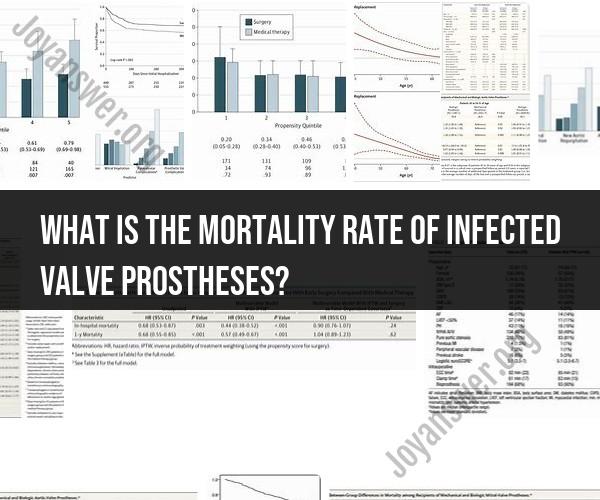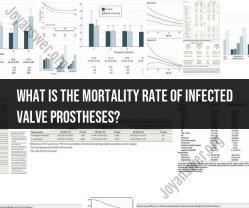What is the mortality rate of infected valve prostheses?
Exploring mortality rates associated with infected valve prostheses is a critical aspect of healthcare research and medical practice. Valve prosthesis infections are serious and potentially life-threatening complications. Here are some insights into this topic:
Risk Factors:
- Understanding the risk factors for infected valve prostheses is crucial. These risk factors may include prior valve surgery, underlying medical conditions, immunosuppression, and surgical complications.
Types of Infections:
- Valve prosthesis infections can manifest as early infections (occurring within the first 60 days after surgery) or late infections (occurring after 60 days). Early infections are typically caused by perioperative contamination, while late infections are often associated with bacteremia.
Microorganisms Involved:
- Identifying the specific microorganisms causing the infection is vital for treatment decisions. Staphylococcus aureus, including methicillin-resistant strains (MRSA), is a common culprit. Streptococci, enterococci, and Gram-negative bacteria are also frequently involved.
Clinical Presentation:
- Recognizing the signs and symptoms of infected valve prostheses is essential. Patients may present with fever, malaise, valve dysfunction, or even septic shock. Physicians need to be vigilant in diagnosing these infections promptly.
Diagnostic Tools:
- Utilizing advanced diagnostic tools, such as echocardiography (especially transesophageal echocardiography), blood cultures, and biomarkers like C-reactive protein (CRP) and erythrocyte sedimentation rate (ESR), aids in accurate diagnosis.
Treatment Approaches:
- Treating infected valve prostheses often involves a multidisciplinary approach, including infectious disease specialists and cardiac surgeons. Surgical removal of the infected prosthesis is often necessary, along with targeted antibiotic therapy.
Mortality Rates:
- Mortality rates associated with infected valve prostheses can vary widely depending on factors such as the type of organism, the timeliness of diagnosis and treatment, and the overall health of the patient.
- Studies have reported mortality rates ranging from 10% to 40% or higher for patients with prosthetic valve endocarditis.
Prevention Strategies:
- Prevention is a key focus in managing infected valve prostheses. Strategies include strict adherence to aseptic surgical techniques, perioperative antibiotics, and prophylactic antibiotics for high-risk patients.
Long-term Outcomes:
- Monitoring patients for recurrent infections and evaluating the long-term outcomes, including the durability of replacement valves, is essential for managing infected valve prostheses.
Research and Advancements:
- Ongoing research into improved diagnostic methods, treatment modalities, and prophylactic measures is critical to reducing mortality rates associated with these infections.
In summary, understanding and addressing infected valve prostheses is a complex and challenging aspect of cardiovascular medicine. Timely diagnosis, appropriate treatment, and preventive measures are crucial in improving patient outcomes and reducing mortality rates. Healthcare professionals and researchers continue to work toward better strategies and advancements in this field to enhance patient care.


